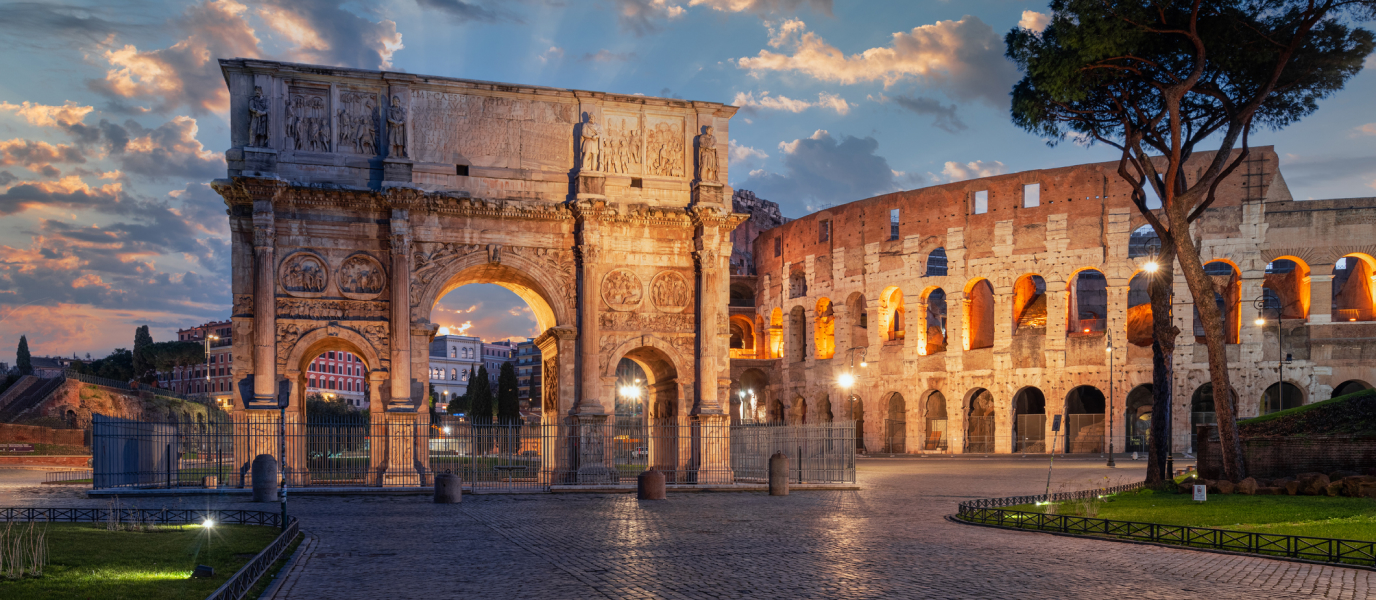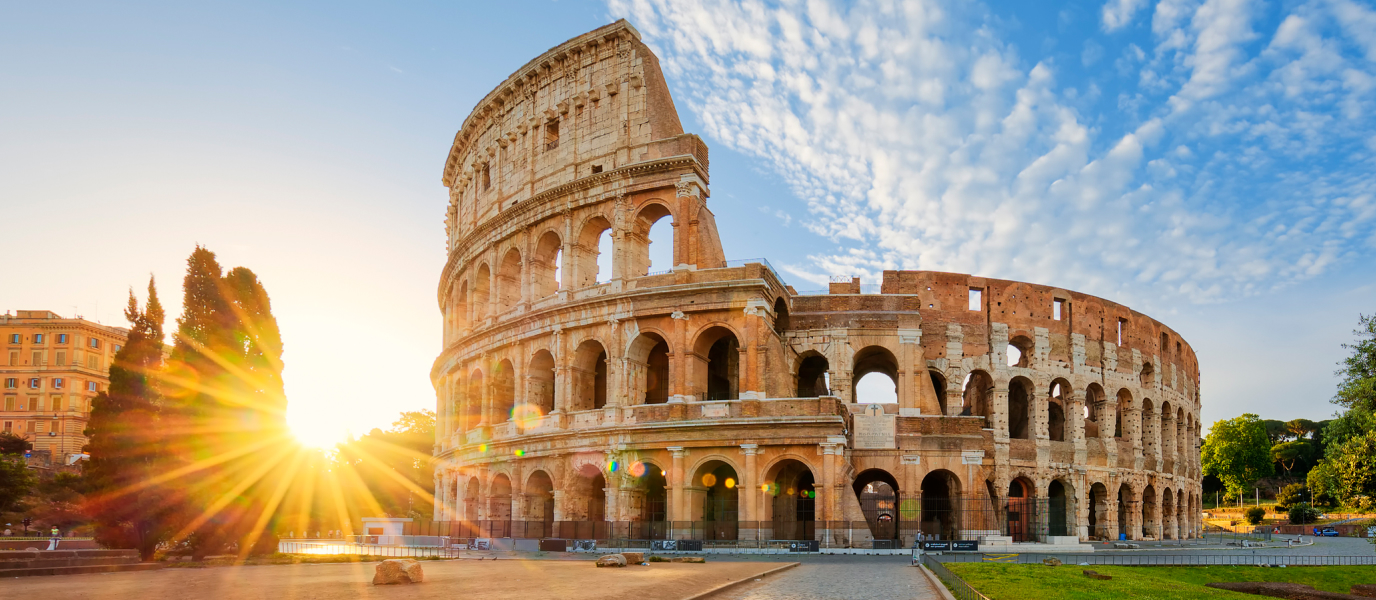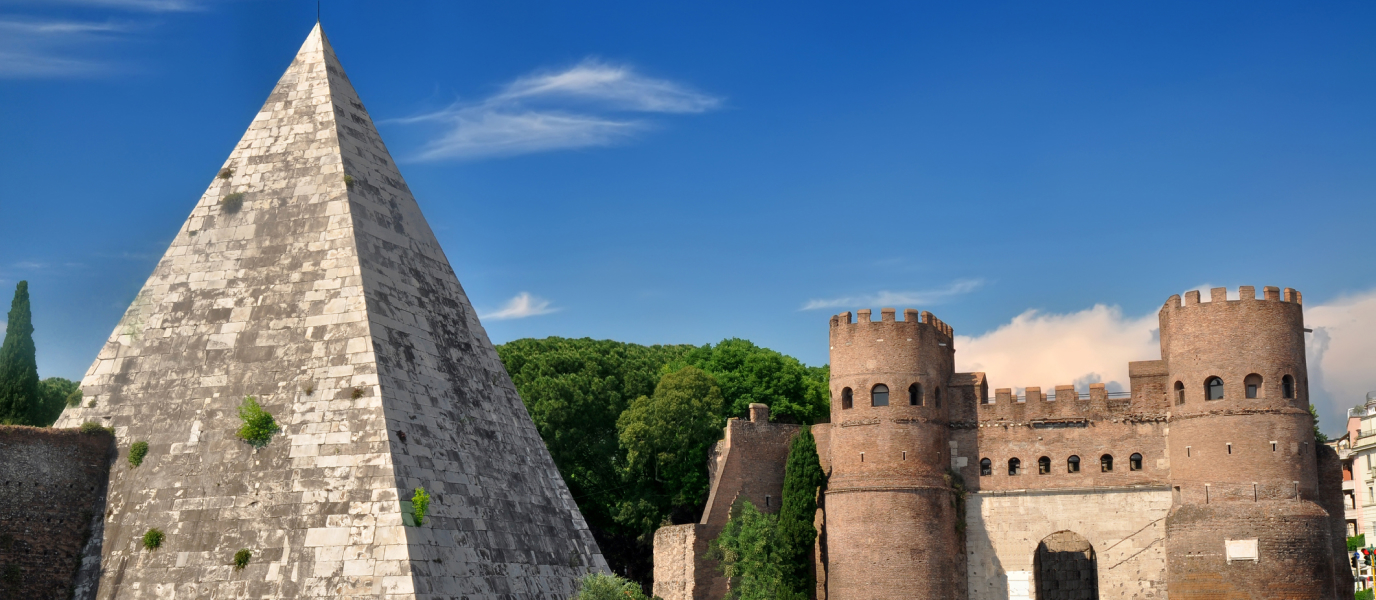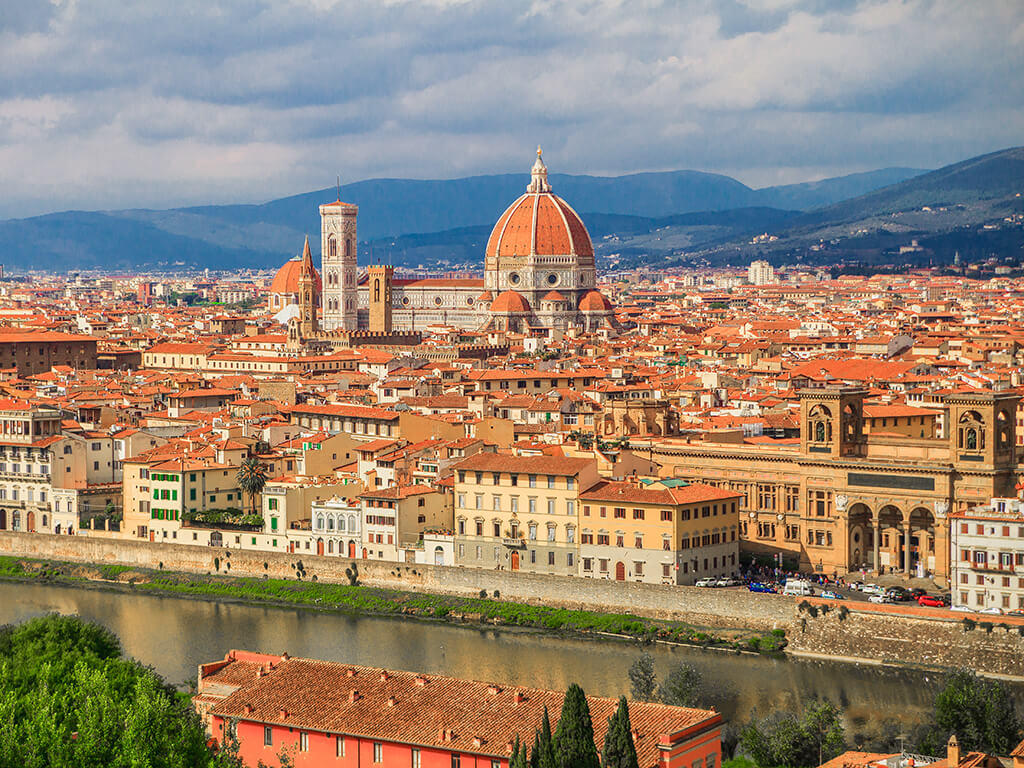The Arch of Constantine is an architectural exaltation of the glory of ancient Rome, built in 315 from monuments recycled from earlier centuries, most notably from the Forum of Trajan. It is the last of the existing triumphal arches in Rome and it underwent significant conservation work in order to return it to its former glory.
The Arch of Constantine was erected by the Roman Senate to commemorate Constantine I’s victory at the Battle of the Milvian Bridge (Link: Ponte Milvio) in 312. The arch spans the Via Triumphalis, the way taken by emperors and their armies, where large, cheering crowds gathered to welcome the victorious Roman troops. The arch is located near the Colosseum and is a must-see landmark and prime photo op for tourists.
The Arch of Constantine
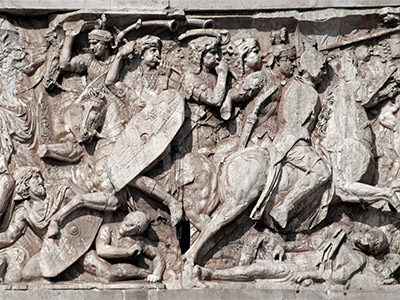
The Arch of Constantine is an imposing structure at 21 m high, 25.7 m wide and 7.4 m deep. Composed of gigantic blocks of marble, it has three separate arches. The central, 11.5-m arch is flanked by two shorter and narrower arches. The monument is decorated with several statues and reliefs. The most notable is the relief panel taken from the Arch of Marcus Aurelius, the ‘Philosopher-Emperor’, depicting him distributing bread among the poor,
The upper attic is decorated with panels showing scenes celebrating Emperor Trajan’s Dacian victory. The attic also presents sculpted panels and a long inscription in Latin, which reads:
To the emperor Flavius Constantine the Great, pious and fortunate, the Senate and the People of Rome, because by divine inspiration and his own greatness of spirit, with his army, on both the tyrant and all his faction at once in rightful, battle he avenged the State, dedicated this arch as a mark of triumph.
The arch is a colossal collage of many other monuments from Imperial Rome. Some view the arch as a manifestation of political propaganda, alluding to Rome’s infinite power and triumph, when in fact the Roman Empire’s power had already begun to dwindle and its downfall was imminent.
Historical background
Why was this monument dedicated to Constantine I? This military leader, who lived between the 3rd and 5th century, is considered to be the last great Roman emperor. He was the first to 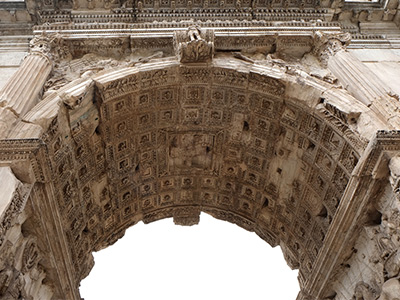 acknowledge the rise of Christianity in the Roman Empire and legalise it. He was also the first Roman emperor to be baptised. His religious policies put an end to the persecution Christians had faced until then. Constantine I also founded Constantinople, modern-day Istanbul, and established it as the capital of the Eastern Roman Empire.
acknowledge the rise of Christianity in the Roman Empire and legalise it. He was also the first Roman emperor to be baptised. His religious policies put an end to the persecution Christians had faced until then. Constantine I also founded Constantinople, modern-day Istanbul, and established it as the capital of the Eastern Roman Empire.
Constantine I ruled the Roman Empire from east to west. He first conquered Rome, the western capital of the Western Roman Empire at the Battle of the Milvian Bridge, and then conquered the Eastern Roman Empire at the Battle of Adrianople in 323.
The Arch of Constantine was erected to commemorate the trajectory of this great military leader. The inscription on the arch may allude to his incredible achievements, freeing the Empire from tyranny, but he in fact ruled with an iron fist. History does have a ‘history’ of being written by the victors.
Interesting facts about the Arch of Constantine
The Arch of Constantine is one of the few surviving classical triumphal arches. Interestingly enough, it managed to escape the recycling of monuments and was not used in the construction of subsequent landmarks as what was the trend in ancient Rome. The Colosseum was not spared from such practices, however, and many of its panels and sculptures were remo ved.
The arch’s lucky escape was due to its incorporation – stone by stone – into the fortress of a powerful Roman aristocratic family during the Middle Ages. It remained in their property until it was returned to its original location, undergoing extensive restoration in 1804.
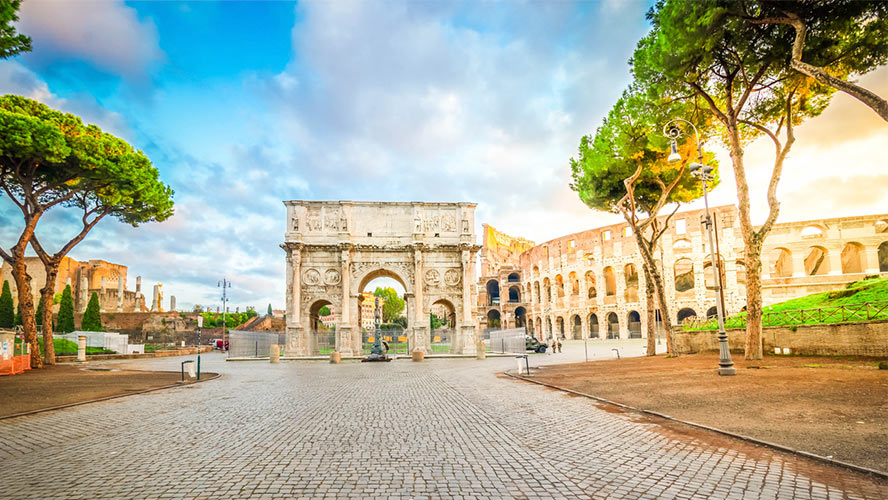
Probably what makes the Arch of Constantine such a fascinating monument from an artistic point of view is the use of architectural and sculptural elements from earlier ancient Roman periods that drastically differ in style: the Corinthian columns date from the Flavian era while the sculptures of the Dacian prisoners are from the Trajan era, the medallions are from the Hadrian era and the marble panels are from the Marcus Aurelius era. Some experts also point to some elements that are typical of the Middle Ages.
No need to be an art historian or history buff to appreciate the artistic majesty of this striking, colossal monument – it is an astounding relic of Imperial Rome.




































































